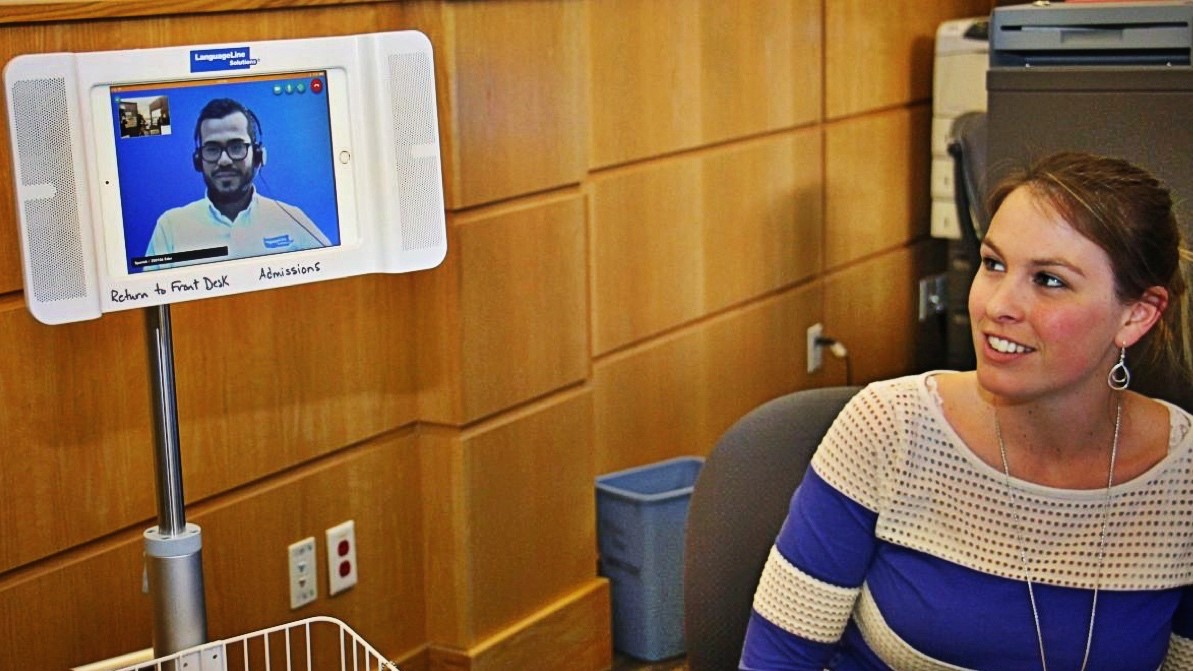One in five of our neighbors here in the United States speaks a language other than English at home. That’s more than 65 million people—25 million of whom say they speak English less than well. Another 10.6 million Americans are deaf or hard of hearing.
The influence of these diverse audiences is enormous and growing. They are citizens, patients, and consumers. Meeting them in their preferred language builds loyalty, achieves compliance, and increases staff productivity while reducing expenses. The opportunities are clear, but the challenge is that—with hundreds of languages spoken in America today—it is very difficult for any organization to meet this demand.
Video remote interpreting (VRI) is an on-demand platform that provides communication to limited English proficient (LEP), deaf, or hard-of-hearing individuals by connecting to a professional interpreter in an off-site location. This is done via camera and microphone on a tablet, smartphone, or desktop, using an internet or cellular connection. VRI reduces the risk of misunderstanding by capturing body language and facial expressions so you can read visual cues.
READ: Three Steps to Successfully Implementing Video Remote Interpretation
Before implementing VRI, your organization should discuss the needs of your audience and how video will fit into your language access plan. Take the time to have this discussion with your front-line staff and any other key stakeholders. Here are a few questions to prompt discussion:
Patient/Customer Needs
- Would access to visual cues and emotional inflection improve communication with your LEP audience?
- Do you serve a significant population of people who are deaf or hard of hearing?
- Do you offer products or services that are complex or need to be explained in detail?
- Do your products or services require users to fill out forms that may require assistance from an interpreter?
READ: Evaluating Video Remote Interpreting Providers: 5 Factors to Consider
Internal Needs
- Do you currently rely on non-professional interpreters (such as friends or relatives) when a need arises?
- Does front-line staff currently have difficulty answering questions or resolving issues with customers, clients, or patients who are LEP, deaf, or hard of hearing?
- Have you experienced an increase in customer, client, or patient complaints from these communities?
- Are there language access regulations with which your organization needs to comply?
- If your organization currently uses on-site interpreters who need to be scheduled in advance, would it be helpful to also have a solution for shorter, more urgent engagements?
- Does your organization operate from multiple locations, which can make distribution of language access resources a challenge?
- Are you missing sales opportunities because of language barriers or a lack of language support?
- Do language barriers create bottlenecks in your ability to serve other clients?
Approaching video remote interpreting as an informed buyer will ensure that you implement the right solution. It also prepares you to use your new technology to its fullest capacity.
To learn more, please download our new guide, “Empowering Your Organization with Video Remote Interpreting: How to Improve Communication with Limited English Proficient and Deaf and Hard of Hearing Audiences.”
LanguageLine Can Help
LanguageLine created the language-access industry nearly four decades ago and pioneered the move into video remote interpreting with the launch of the LanguageLine app. We are thrilled to be extending the promise of video interpreting to multiple industries.
LanguageLine is able to get you connected to our team of 11,000 professional, on-demand interpreters via audio or video in 30 seconds or less. We do this in more than 240 languages. LanguageLine can also translate and localize your written content. We provide these services 24 hours a day, seven days a week, 365 days a year.
It all starts with a conversation. Please contact us via our website or by calling 800-752-6096. We would like to learn more about the opportunities you may have to use mobile interpreting.


